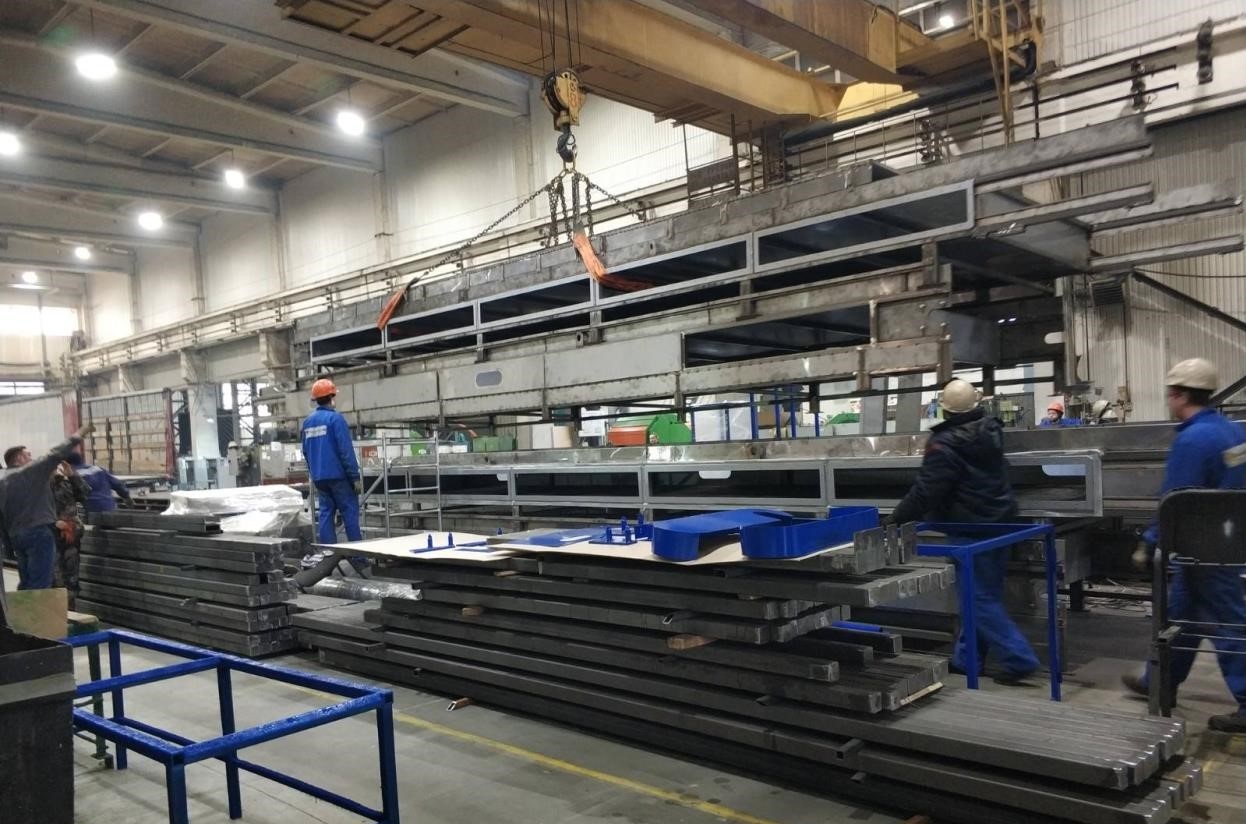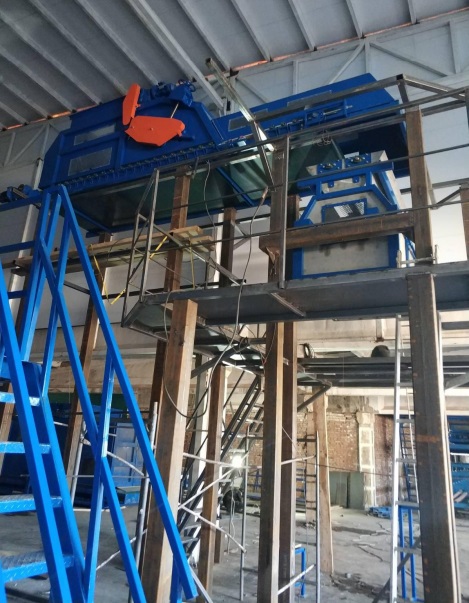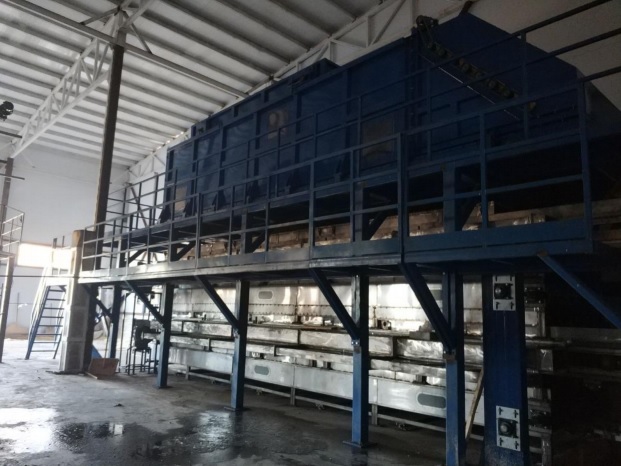Small enterprises are mastering OSB production. Interview with the head of Rozas LLC, an OSB production newcomer
The issues of effective disposal of waste from harvesting, woodworking, and value-added wood processing have been particularly topical for Russia in the post-Soviet period. Today, more and more small Russian enterprises are opening their own board production facilities, thereby taking the local OSB production market share away from such behemoths as Kronospan or STOD. The OSB localization tendency in Russia began in 2012 with HILLMan OSB, a small plant in the Vladimir region with a capacity of 30,000 m³ per year. For technical and economic reasons, the plant eventually left the market. Eight years later, after the start-up of large-scale OSB plants of DOK Kalevala, Kronospan Yegoryevsk, Kronospan Bashkortostan, STOD, and NLK, low-capacity plants became attractive to investors again.
WhatWood Agency interviewed Roman Zagovenko, Head of Rozas LLC, a harvesting and wood processing company planning to open its own OSB production facility in the Perm region.
– Mr. Zagovenko, thank you for agreeing to answer the questions of WhatWood Timber Industry Analytics Agency. Please tell us about your company in a nutshell.
– ROZAS has been operating since 2006, it is based in the village of Chastye of the Perm region. The company is engaged in timber harvesting, wood processing, and wooden housing construction. We have some forest resources on lease. We are also widely introducing technologies of zero-waste wood processing. The main products of the company are commercial sawlogs, sawn timber, house kits, moldings, wood pellets and briquettes. We have experience in supplying products under export contracts as well.
– Are you going to only purchase raw materials or also arrange your own harvesting for the new OSB facility? If you are going to harvest on your own, then what will you do with the commercial timber, i.e. sawlogs?
– We have sufficient own harvesting supply, but when necessary, we can buy raw materials in the local market. We process sawlogs ourselves as well.
– Why did you decide to invest in the OSB production (investments amounted to 260.5 million rubles – WhatWood’s note)?
– We recycle production waste and already produce biofuels. The market analysis showed that it would be more profitable to produce OSB, so we decided to do that.
– What challenges did you encounter during the development of the project? Were there any pitfalls in the preparation of documents for construction?
– There were no particular difficulties. To accommodate the equipment, we have modernized our own production premises. I don’t recall any documentation problems either.
– What is the current status of the project? When is the start-up scheduled for? What has already been installed? What else remains to be done?
– The production line has already been installed, the machines are all in their places. Commissioning and start-up of the equipment are underway, as well as recruitment and staff training. The first production run is scheduled for August 20, 2020.
– You have informed that Neoparma will be the supplier of the equipment. Can you share names of the manufacturer of the main equipment, in particular, presses and dryers?
– Neoparma is an engineering company. They are the owners of the technological documentation. The equipment is manufactured at various machine-building enterprises in Russia. Press and shaving machine are made in Vologda, boilers in Kovrov, drying chamber, formashin and bunkers are made in Krasnokamsk.
– You are planning to start producing OSB with an annual output of 15,000 m³. Will you increase the output in the future? Or will you go by the market conditions?
– If the market conditions are favorable, we will undoubtedly increase the output. The design allows us to do so, it provides for additional capacities. We will be able to double the output in a short time frame.
– What will be the format of your OSB boards? Are you going to export as well or sell only in the domestic market?
– We will produce 1250 x 2500 boards. The main sales market is the Perm region. We plan to export our products as well, of course.
– Do you already have any requests from dealers for the purchases of OSB boards?
– We have some, negotiations are underway.
– The declared project cost is 260.5 million rubles. Who is the lender and investor of the project?
– The project is being implemented at the expense of the company’s own funds and an investment loan of Sberbank.
– At the meeting of the Gubernatorial Council for Entrepreneurship and Improvement of the Investment Climate of the Perm Region, the project of Rozas was assigned the “priority” status. Will you apply for inclusion in the federal list of the Ministry of Industry and Trade of Russia?
– We try to take every opportunity that would allow us to implement the project faster.
– What state aid measures for small and medium-sized forest businesses are lacking in general?
– I believe it is the regulatory guillotine that will allow businesses to grow. The range of state guarantees and interest rate subsidies should also be expanded. With regard to the main type of economic activity of an enterprise. Our main activity is timber harvesting. We do not receive any support measures stipulated for wood processing enterprises, although we qualify as one and we develop in this direction. Besides that, we are experiencing difficulties with VAT refunds. Because of this, the project ran into cash deficiencies. That’s why the start-up date has been shifted to the right.
– What potential of the region in the OSB production with regard to the raw materials supply can you see?
– According to experts, it would be feasible for the Perm region to have 10-12 small OSB plants with a total output of 350,000–400,000 m³ of OSB boards per year.
– Is that why the company plans to launch two more lines of similar production in other districts of the Perm region?
– Yes, you figured it out. We are already selecting sites for locating OSB production facilities closer to the places of harvesting.
– Many have heard of the unimplemented large-scale investment project for the construction of an OSB plant just 150 km from you, in Chaikovsky, called ‘Oris’, with a capacity of over 500,000 m³ per year. Did that investment project initially have any chances to be successfully implemented, in your opinion?
– Oris has not been the only unimplemented project for the construction of an OSB plant. There have been other major projects as well. However, the large output of 300,000–500,000 m³ per year makes the project vulnerable in terms of payback periods mainly conditioned by the supply of raw materials at a reasonable price and borrowing costs. I can’t say anything about the chances of Oris project. But I am sure that projects of low and medium capacity in the conditions of modern Russia are more promising.
– Mr. Zagovenko, the last thing I would like to ask is how successfully the products of small producers can compete with the same Kronospan that can offer large volumes through its developed network of dealers and distributors while having a margin of safety against drops in prices?
– I suppose that it is small producers that have a margin of safety. They are more flexible, and drops in prices should be of benefit to them.
 Timber industry research & analytics
Timber industry research & analytics 


